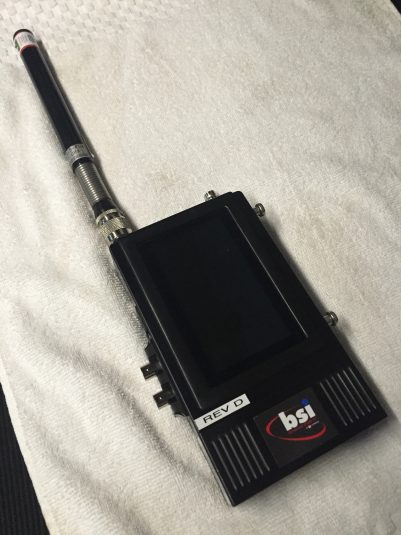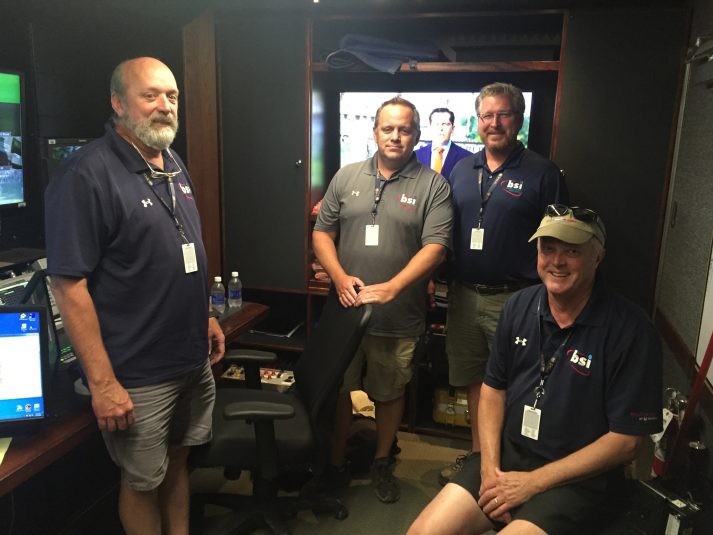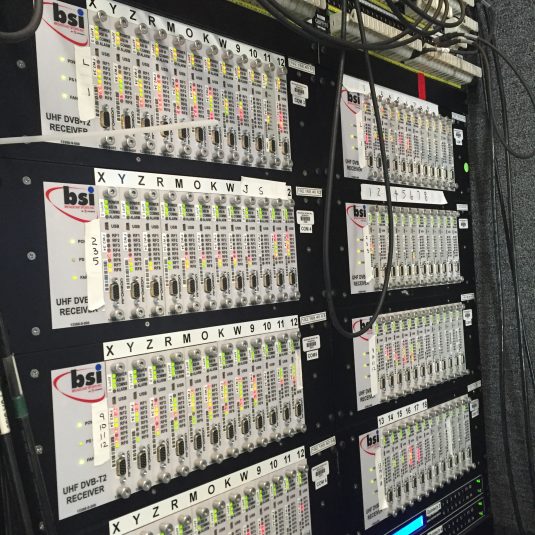New Transmitters From BSI help CBS, Turner Overcome RF Challenges at PGA Tourney
Baltusrol’s close proximity to New York City dramatically impacts RF game plan
Story Highlights

Broadcast Sports International debuted a collection of RF transmitters to meet demands at last weekend’s PGA Championship at Baltusrol Golf Club.
In no other widely produced major sport is RF more critical to a television operation than in golf, and, at last weekend’s PGA Championship at Baltusrol Golf Club in Springfield, NJ, CBS Sports and Turner Sports faced some unique challenges in making that RF work. Among them were moving to higher frequencies on the band because of security mandated by the event’s proximity to New York City and moving to a more ground-based system for the heavily tree-lined course.
Broadcast Sports International (BSI) was on hand with three full trucks in the production compound to support 26 RF cameras along the course and a collection of new in-house–built transmitters to help overcome all obstacles and provide a robust deployment of technology.
To pull off a show of the caliber of a major golf championship, a company like BSI requires a lot of spectrum that the networks need FCC special authority to use. Lately, BSI has been using 2.2 Gig spectrum whenever possible because it provides the strongest signal capable of the deepest penetration.

From left: the BSI team of Earl Freeman, Hunter Daus, Bob Weeks, and Peter Larsson supported the robust RF operation.
Unfortunately, the broadcasters were denied use of the 2.2 Gig spectrum for this event because the spectrum was required for additional security presence given the tournament’s location near New York City. Therefore, BSI needed to go higher on the frequency band, to 7 Gig, which meant less penetration and required more receive sites scattered throughout the course. To help accomplish that, BSI deployed new transmitters, which were originally designed to debut on auto-racing events this month but were needed for emergency duty at Baltusrol.

Multiple receive sites deployed throughout the course were fibered to this switching system in one of three BSI trucks in the TV-production compound.
“The video quality itself is a lot better,” says BSI GM Peter Larsson, who noted that these new transmitters feature H.264 encoders. “One of our concerns is that, when the RF breaks up, there is a recovery process that they go through, which is a little more onerous than the older Link encoders. It’s just a matter of getting them out into the field and seeing how they do.”
Baltusrol’s links-style course features tightly packed holes, which means that fewer receive sites are needed, but the course also has heavy tree cover, which means that more receive sites are needed. So it’s a bit of a give-and-take on the RF front.
In the past, a company might have used a crane carrying a 25-W amp to provide sufficient coverage of the course, but BSI needed to stay low to the ground and deploy multiple receive sites, which were fibered to the switching system in the truck compound. The system was a flexible one, though: the transmitter on each camera scanned for all incoming antenna signals from the receive sites and automatically chose which antenna was closest and best for the camera operators on the course.
